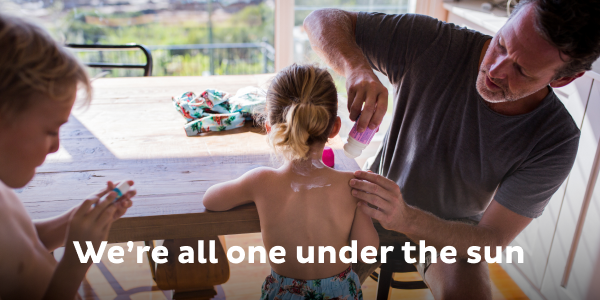New research reveals Australians vulnerable to skin cancer, as routine skin safety practices overlooked
Leading preventative health expert calls on Australians to check their skin this summer. Media Release -Commissioned by leading Australian life insurer TAL, as part of its annual national skin safety awareness program, the TAL SpotChecker research1 finds that the majority (83%) of Australians say that skin safety is important to them. Despite this, 72% recognise they should do more to protect themselves against skin cancer, and 69% agree they should be self-checking their skin for early signs of skin cancer more frequently.
Advocate for skin safety and protection, Dr Priya Chagan, TAL’s General Manager of Health Services, says there is a persistent disconnect between people’s skin safety intentions and their actions, with not enough people taking tangible steps to prevent or reduce the impact of skin cancer.
The TAL SpotChecker research tells us that Australians have good intentions around how they can protect themselves from the sun. 73% want to set a good example for their loved ones and encourage them to take the right measures to protect themselves from the sun with the key motivators being to prevent sunburn (76%), reduce skin cancer (67%) and concerns about their skin health (52%).
In reality, 70% admit they sometimes forget to protect themselves from skin cancer, and less than half (43%) of Australians consider sun safety as part of their daily routine. This is concerning because even just a few instances of severe, unprotected sun exposure can have dire consequences for skin health outcomes.”
TAL’s research finds close to half (46%) rarely or never check the UV levels before spending time outdoors, while a third (34%) don’t regularly check the temperature before spending time outdoors.
The last few Australian summers saw devastating bushfires, COVID-19, and cooler weather which has impacted our sense of readiness for extreme heat and elevated UV levels. The Cancer Council of Australia2 states an index of 3 or above means that UV levels are high enough to damage unprotected skin, so people should embrace more than one type of sun protection. Many of us have become complacent around sun safety, so it is crucial that we practice positive habits to protect ourselves from the sun this summer including adequate sunscreen use, seeking shade where possible, and wearing protective clothing,” says Dr Chagan.
Vigilance in performing regular self-checks of the skin is an important tool in early detection of skin cancer and neglecting this could put Australians at risk.
Dr Chagan says, “We know from the TAL SpotChecker research that year-on-year Australians are slowly becoming more adept in self-checks but there are still 1 in 5 Australians (19%) who have never done a self-check of their skin, and 38% who either have not done a check within the last three months or cannot remember when their last one was.
These findings highlight the urgency of promoting proactive, regular and preventative skin safety habits in Australia including self-checking regularly, speaking to your GP about your risk level of skin cancer and then when necessary, booking a professional skin check.”
As a nation renowned for its sunny climate, the risk of skin cancer is particularly high with 2 in 3 Australians anticipated to be diagnosed with some form of skin cancer by the age of 70, according to the Cancer Council of Australia .
As we mark the TAL SpotChecker program’s eighth year, we are more focused than ever on enabling proactive health management and the holistic wellbeing of all Australians,” Dr Chagan concluded.
Visit TAL SpotChecker for more information, resources, and self-check guides.

1The survey was conducted by Edentify Pty Ltd on behalf of TAL, in October 2023, with a sample of 1,000 respondents in Australia aged 18-65+ years old
